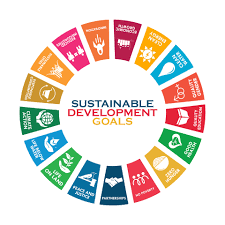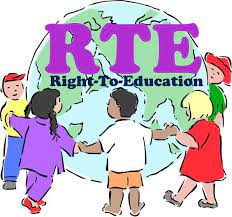 Prof Satya Narayan Misra in Bhubaneswar, May 10, 2023: The SDG goals upped its antennae over the MDM goals by targeting zero poverty, zero hunger, quality education, and good health. However, the surprise package was Goal 10 which aimed at reducing income inequalities (10.1), promoting socioeconomic inclusion (10.2), ensuring equal opportunity (10.3), and adopting fiscal and social policies that promote equality (10.4).
Prof Satya Narayan Misra in Bhubaneswar, May 10, 2023: The SDG goals upped its antennae over the MDM goals by targeting zero poverty, zero hunger, quality education, and good health. However, the surprise package was Goal 10 which aimed at reducing income inequalities (10.1), promoting socioeconomic inclusion (10.2), ensuring equal opportunity (10.3), and adopting fiscal and social policies that promote equality (10.4).
This goal clearly irked the right-wing economists, who believe in the power of the market to maximize wealth creation through economic efficiency rather than economic equity and socio-economic inclusion, championed by left-wing academia.
It was Marx in his magnum opus ‘Capital’ (1867) was the first to make a clarion call for a classless society as he had noticed how the capitalist economy is exploitative of labor & contains the seeds of its own destruction. The Russian Revolution of 1917 and the disintegration of the USSR in 1991 prompted Fukuyama to conclude in his book ‘End of History’ that liberal democracy & free market have ended the binary debate of capitalism vs socialism.
It was the seminal work of Thomas Piketty ‘Capital in the 21st Century’ (2013) that clearly demonstrated how the Kuznets inverted U-turn hypothesis that increasing prosperity will lead to a reduction of income inequality is not borne out by facts. SDG 10 carries in its womb the angst of Piketty and Nobel laureates like Krugman & Stiglitz & Abhijit Banerjee & hopes & syntax of a more egalitarian world.
The World Inequality Report (2022) has brought out how the bottom 50% of the world share 8.5% of total income while the top 10% have the lion’s share of 52%. In terms of wealth distribution, the asymmetry is even more stark, with the bottom 50% owning 2% of immovable assets while the top 10% own 76%. In the case of India, the bottom 50% used to own 21% of total income in 1990, which has come down to 12% in 2022. The share of the top 10% has gone up from 32% (1990) to 58% in 2020.
Quite clearly income inequality has been accentuated, failing the constitutional mandate in Art 38(2) that the state shall strive to minimize the inequalities in income and eliminate inequalities in opportunities. Both Banerjee and Piketty in their editorial remarks to WIR implore all countries, including India, to increase the tax rate on the superrich & impose a suitable wealth tax.
 While there is unanimity amongst countries to achieve all the SDG goals there is an ideological divide as to whether the state should adopt a fiscal policy to decrease income inequality. The pro-market lobby believes that inequality is inevitable and may even be beneficial. They believe that social leveling adds to economic stagnation as it caps aspiration and removes incentives for hard work and excellence. Milton Friedman believes that equality is less important than economic freedom.
While there is unanimity amongst countries to achieve all the SDG goals there is an ideological divide as to whether the state should adopt a fiscal policy to decrease income inequality. The pro-market lobby believes that inequality is inevitable and may even be beneficial. They believe that social leveling adds to economic stagnation as it caps aspiration and removes incentives for hard work and excellence. Milton Friedman believes that equality is less important than economic freedom.
On the other hand, left-leaning analysts believe that inequality breeds resentment, hostility, and strife. The poor feel disempowered and marginalized. Richard Wilkinson, in a lovely book ‘The Spirit Level,’ (2009) brings out how developed countries like the USA with income inequality (41%) are afflicted with a higher level of health and social problems compared to countries like Sweden with lower inequality (31%).
Walter Scheidel in a perceptive book The Great Leveler (2017) brings out how the average tax rate on the top 1% of households has come down from 42% to 27% during 1980-2013. This was the time when Reaganomics ruled the roost, with the tax rate at the top coming down drastically. Paul Krugman also brings out how tax bounty was accompanied by a union-busting strategy.
The union membership fell down from 34% to 8%. This impacted poor real wage increases. Piketty had brought out in Capital that return to capital was substantially higher than the growth rate and real wage increase was the least. In the Indian context, land reform measures like land ceiling and consolidation of holding have come as a cropper due to inept implementation and vested interests stymying implementation.
Further tax rates at the top income bracket have come down from 60% in 1980 to 30% by 2003. Wealth tax was abolished by Arun Jaitley in the 2016-17 budget. Quite clearly India has been following Reganomics rather than Piketty. An increase in income inequality in India is not an accident of history but a feature of market economics that India has embraced, which benefits the rich corporates & neglects the bottom 50%.
The latest Oxfam report brings out how the fortune of the billionaires has increased by $2.7 billion per day, while inflation has outpaced the wages of around 1.7 billion workers. The food & energy component doubled its profit in 2022, while 800 million people went to bed hungry. It suggests that a wealth tax of up to 5% on multimillionaires and billionaires will fetch $1.57 trillion which will be enough to lift 2 billion out of poverty.
Krugman believes that there is a need to integrate economic growth with the proper distribution of income between capital and union. To achieve this the bargaining power of the union must be restored, with participatory management. Quite clearly Piketty’s call for a drastic increase in the tax rate on the super-rich has no takers. It also militates against the animal spirit of the entrepreneurs & their zest for risk-taking.
 The long-term solution seems to be to adopt the capability approach of Prof Amartya Sen which aims at removing barriers to equal opportunity. While universal access to school education has been achieved, quality education remains dodgy as brought by successive ASER surveys on the impact of the RTE Act 2009. Piketty in his recent book ‘Capital & Ideology’ rightly argues that early intervention in primary education is ‘the best way to correct scholastic inequality between students from different social backgrounds.
The long-term solution seems to be to adopt the capability approach of Prof Amartya Sen which aims at removing barriers to equal opportunity. While universal access to school education has been achieved, quality education remains dodgy as brought by successive ASER surveys on the impact of the RTE Act 2009. Piketty in his recent book ‘Capital & Ideology’ rightly argues that early intervention in primary education is ‘the best way to correct scholastic inequality between students from different social backgrounds.
The NEP 2020 also brings out how the Early Childhood Education in 14 lakh Anganwadi center to about 30 million children is in a deplorable condition, that needs drastic improvement.
Goal 10 of GDP harps on a combination of equal opportunity, inclusive policy, and fiscal policy as the critical kingpins for minimizing inequality. Even in developed countries like Brexit happened because people on the margins felt left out of access to quality education & living conditions.
The Economist in its 175th year of publication had lamented that liberal democracy is at a crossroads as the governing elite is subserving the interests of rich corporates than of ordinary citizens. India’s record in terms of ensuring equal access, and having programs like ICDS, and SSA are edifying.
However, the quality dimension is severely lacking as the state does not invest enough in education and health (spending around 5% of GDP) rather than 9%) as is being recommended by various committees and evidenced in best global practices. As we celebrate Karl Marx’s 205th BDay anniversary, his utopian vision as broadly encapsulated in Goal 10 remains a troubled terrain. It is only through robust political will and a collaborative approach of government, corporates & local community, a more equitable & just society can be a reality.



Leave a Reply
Be the First to Comment!